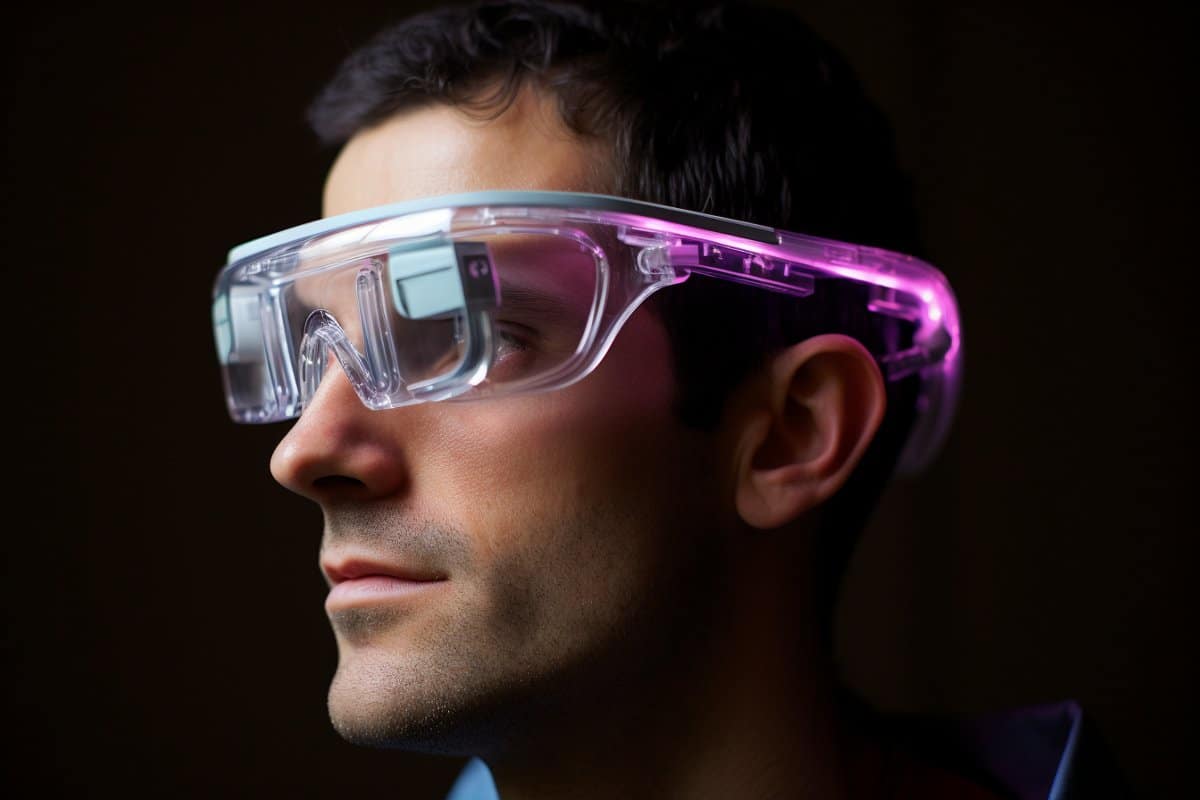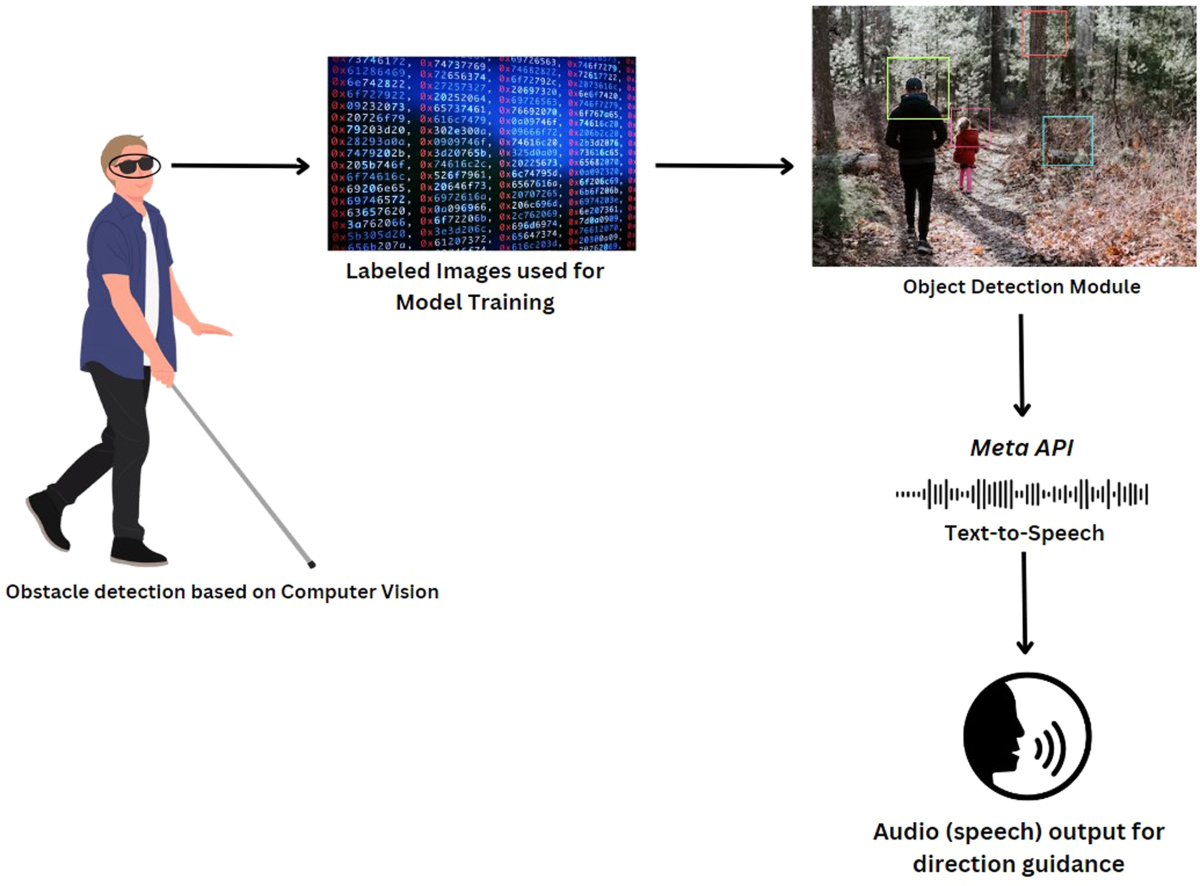AI-Powered Visual Aids: The Next Step in Assistive Technology for the Blind
Discover Advanced Assistive Instruments for Individuals With Aesthetic Impairments
The landscape of assistive modern technology for people with aesthetic impairments is advancing quickly, offering a range of ingenious tools that improve freedom and involvement. From wise glasses that perfectly combine aesthetic input with acoustic assistance to sophisticated navigation applications that redefine spatial awareness, these tools are reshaping opportunities.
Smart Glasses Innovations
Smart glasses represent a considerable development in assistive technology for people with visual impairments. Outfitted with electronic cameras and sensing units, wise glasses can record real-time aesthetic information, which is then refined and conveyed to the individual through sound comments or haptic sensations.
Additionally, improvements in synthetic knowledge have better enhanced the capacities of smart glasses. Equipment knowing formulas can recognize faces, checked out text, and identify things, making them very useful devices for everyday tasks. Users can get acoustic hints that provide context about their atmosphere, promoting freedom and confidence.
Furthermore, the ergonomic layout and lightweight nature of many wise glasses make them suitable for prolonged use, making sure convenience while enhancing functionality. As these gadgets continue to advance, they hold the prospective to change the method people with visual disabilities experience their day-to-days live, connecting the gap between ease of access and technology. The ongoing research study and development in this area assurance to increase the opportunities for smart glasses, making them a vital component of modern-day assistive gadgets.
Navigating Apps and Equipment
Various navigation apps and tools have become crucial sources for people with aesthetic disabilities, substantially enhancing their capability to pass through unknown settings. These modern technologies leverage general practitioner performance, audio signs, and real-time information to supply customers with specific navigating aid.
One prominent example is the Aira application, which connects users to trained representatives who can supply visual descriptions of environments and navigating advice via a live video clip feed. This solution boosts the customer's spatial awareness and self-confidence while navigating. An additional noteworthy tool is Seeing Eye GPS, which provides voice-guided navigating and points of rate of interest, enabling users to gain access to essential details concerning their environments.

As innovation continues to advancement, the growth of a lot more sophisticated navigation tools promises to additional equip individuals with aesthetic impairments, assisting in seamless mobility and assimilation into diverse settings. Such developments contribute in advertising a much more comprehensive society.
Braille Innovation Advancements
Recently, innovations in Braille modern technology have substantially changed just how individuals with visual problems access information and engage with the globe around them. The advancement of mobile Braille displays has actually changed reading by allowing individuals to attach wirelessly to mobile phones, computer systems, and tablet computers. These tools convert text right into Braille in real-time, enabling smooth interaction with digital content.
Additionally, ingenious Braille printers have actually arised, enhancing the manufacturing of responsive products. Modern embossers are much faster and much more reliable, permitting the rapid development of Braille files and academic products. This performance reduces the moment and price connected with creating Braille resources, making them much more accessible to colleges and organizations.
In addition, the assimilation of Braille with other innovations, such as expert system and machine learning, has opened up new opportunities for tailored discovering experiences. Voice acknowledgment and synthesis technologies can match Braille, providing a comprehensive technique to info dissemination.
As the demand for comprehensive education and learning and work environment environments expands, these technological improvements play an essential role in equipping individuals with aesthetic impairments, guaranteeing they have equal access to info and chances in different aspects of life.
Wearable Devices for Self-reliance
A growing range of wearable gadgets is boosting independence for individuals with aesthetic problems, providing innovative options that boost navigating and daily living. Braille displays and notetakers. These tools utilize innovative innovations to provide real-time feedback and support, promoting freedom in numerous atmospheres

Wearable modern technology likewise consists of smartwatches that can be programmed with accessibility attributes, enabling customers to get notifications, track their places, or perhaps require assistance with the touch of a switch. Some tools integrate fabricated knowledge contact lens eye exam to evaluate the atmosphere, offering sound descriptions of neighboring items or people.
Voice-Activated Assistive Solutions
Leveraging voice-activated assistive options has actually transformed the landscape of assistance for people with visual impairments, giving hands-free communication and accessibility to a selection of tasks. These modern technologies make use of all-natural language handling and artificial knowledge to make it possible for users to carry out everyday activities with straightforward voice commands.

Additionally, recent advancements in voice acknowledgment accuracy have actually enhanced the individual experience significantly, fitting diverse accents and speech patterns. This inclusivity makes certain that even more people can gain from these innovations, fostering a greater sense of freedom.
Conclusion
Finally, the advancement of advanced assistive tools significantly improves the self-reliance and lifestyle for people with visual disabilities. Advancements such as clever glasses, navigation applications, Braille technology, wearable tools, and voice-activated solutions jointly promote an even more comprehensive atmosphere. These technologies equip customers to navigate their surroundings with confidence and engage even more completely with the world, eventually advertising higher ease of access and level playing fields for individuals encountering aesthetic challenges.
The landscape of assistive modern technology for individuals with aesthetic impairments is evolving swiftly, offering an array of cutting-edge tools that boost autonomy and involvement.Smart glasses represent a considerable innovation in assistive modern technology for individuals with aesthetic problems. As these tools proceed to develop, they hold the potential to change the method people with aesthetic impairments experience their day-to-day lives, connecting the gap in between ease of access and innovation.In recent years, innovations in Braille technology have actually significantly transformed how individuals with aesthetic impairments accessibility details and involve with the globe around them. These technologies equip customers to navigate their surroundings with confidence and involve even more completely with the world, inevitably promoting higher access and equal chances for individuals dealing with visual challenges.